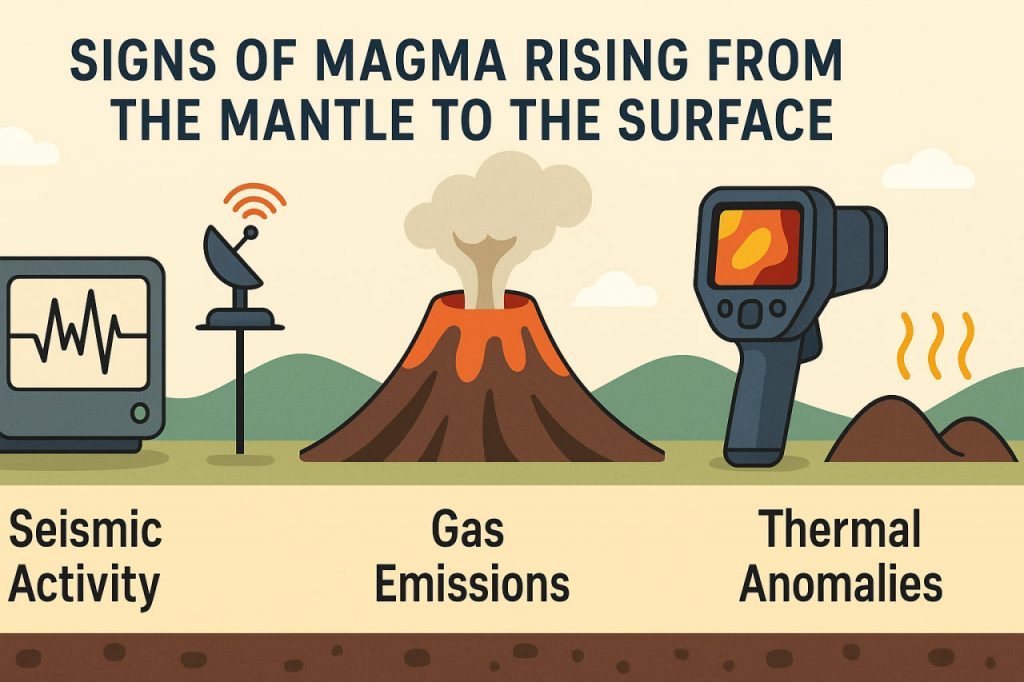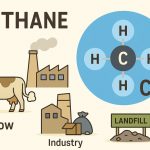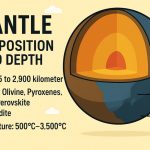One of the clearest indicators of magma movement is seismic activity. As magma pushes through cracks in the Earth’s crust, it causes small earthquakes called volcanic tremors. Scientists monitor changes in the frequency, depth, and strength of these quakes. Clusters of shallow earthquakes often indicate that magma is moving closer to the surface.
Ground Deformation
The rising of magma increases pressure beneath the surface, causing ground deformation. Using GPS measurements and satellite-based InSAR (Interferometric Synthetic Aperture Radar), scientists can detect even slight swelling or tilting of the ground around a volcano. Such deformations often precede eruptions and reveal where magma is accumulating.
Gas Emissions
As magma approaches the surface, gases dissolved in it—such as carbon dioxide (CO₂) and sulfur dioxide (SO₂)—escape through cracks and vents. A sudden increase in gas emissions signals that magma is degassing at shallower levels. By monitoring gas concentrations, scientists can estimate both the depth of magma and the likelihood of eruption.
Thermal Anomalies
Magma rising toward the surface increases the temperature of surrounding rocks and groundwater. Thermal cameras, satellite sensors, and infrared instruments detect such anomalies. Melting snow, hot springs, or unusual heating patterns around volcanic areas are additional warning signs that magma is moving upward.
Changes in Hydrothermal Systems
Volcanoes often host complex hydrothermal systems, including geysers, fumaroles, and hot springs. When magma rises, it alters underground water circulation, causing shifts in temperature, chemistry, and pressure. Sudden increases in steam emissions or changes in mineral deposits around vents often indicate new magma intrusions.
Geophysical Measurements
Advanced geophysical methods also provide insights. Magnetotelluric surveys detect changes in electrical conductivity caused by molten rock. Gravity measurements can reveal density changes beneath the Earth’s surface. Together, these techniques help create 3D models of magma chambers and pathways.
Conclusion
Scientists identify magma rising from the mantle to the surface through a combination of seismic activity, ground deformation, gas emissions, thermal anomalies, hydrothermal changes, and geophysical measurements. By integrating these observations, volcanologists can better predict eruptions and reduce risks to human populations. Understanding these signs is vital for monitoring active volcanic regions and ensuring safety.
Glossary
- Magma – molten rock beneath Earth’s surface.
- Volcanic tremor – small earthquakes caused by magma movement.
- InSAR – satellite method for detecting ground deformation.
- Degassing – release of gases from magma.
- Hydrothermal system – network of heated water, steam, and gases in volcanic areas.
- Geophysical survey – scientific measurements of Earth’s physical properties.


